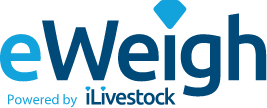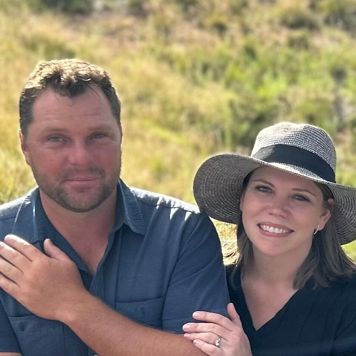Data management

We have a simple setup in terms of hardware and software used on
the farm. We manually draft our sheep and use
Tru-Test load cells
instead of bars. And we have been using the
eWeigh
and
iLivestock app
for more than five years. Because we lamb four times a year, we
are constantly going through the motions from lambing to weaning,
moving and selling store lambs or old animals, synchronising ewes
again, activating breeding, doing an ultrasound scan, and going
into lambing again. That’s probably why we learned how to use
iLivestock and eWeigh so quickly, as we use it on a weekly basis.
It’s definitely been a game changer to our business.
As data gradually builds up, results start to speak for themselves.
We experienced our last drought between 2019 and 2021 during which
we sold quite a lot of animals. We were able to let go between
10-15% of our flock per year for three years in a row. Our animal
records enabled us to select and sell animals with undesirable
performance records or genetics. Despite reducing the number of
ewes we farm with, the number of lambs born remained the same! So,
your livestock might look pretty. They might be nice and fat, and
the body condition score might be perfect, but they're not always
your best producing animals.
Accuracy is key when working with breeding stock. Our manual
drafter, that is used with iLivestock, ensures that we have
accurate data by checking the weights and other animal details
(e.g. average daily gain and litter size) when weighing each
animal. We use a manual drafting crate system, which is
rudimentary, but for us cost-effective because of the data
accuracy. We compare today’s weights with the last weight to ensure
that we pick up any differences. This is important because
sometimes the physical state of a ewe has reached the point where
she will not be profitable. We work with speed but make sure that
we do it accurately. Whatever you do today should last you for six,
seven years into the future, potentially.
Your livestock might look pretty. They might be nice and fat, and
the body condition score might be perfect, but they're not always
your best producing animals.
That's also what we aim to convey during our
practical short courses
for South African farmers. You want to make every lamb
count. The electronic tag is not going to magically make you sell
more animals. If you spend the money to buy electronic tags and
systems, you have to put in the time and effort to collect accurate
data. Otherwise, you might as well just leave it. Wool and other
animal management audits have been rolled out in South Africa, and
soon we will not be able to export our wool, if we're not part of a
responsible standard or something of the sort. iLivestock makes our
audits a paperless and pain-free experience.

